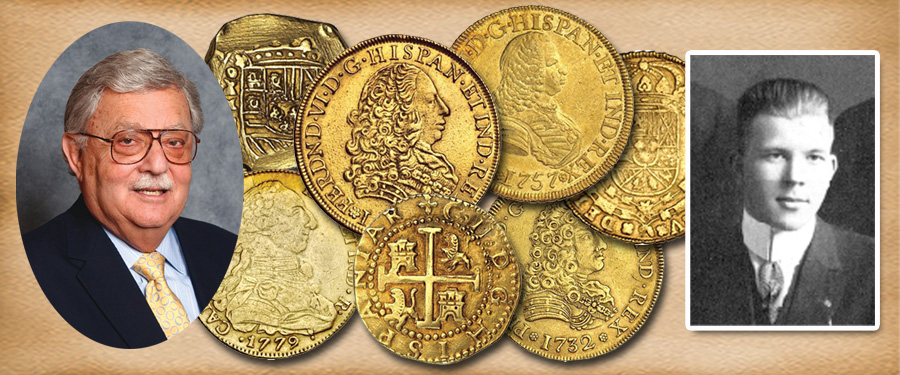
In the late fall of 1951 Josiah K Lilly stopped off
at Stack’s on his way to Palm Beach for the
winter. (Mrs. Lilly liked to make the stop in New York to do her shopping and to
rest from the first part of their trip).
We showed him what we had assembled, close to 100
different dates and mints of the various Central and South American
issues. These were not easy to assemble, for as we searched, our dealer friends thought
this was a good time to raise their prices. Stack’s became their own major
competitor for these coins. During the summer we had sent out inquires to many dealers to
get quotes
and lists of what they had for sale. Of course, this information found its way
to others as well and the demand made this a "hot series," so up went the
price. We refused to buy at these inflated prices, for it was our obligation to
our client to keep the prices in line with the general market conditions,
not an artificial surge in “demand.” So when we could find them we bought
pieces at reasonable prices, but we also refused a goodly number. This was a situation where prices went up,
but not based on true demand, something that happens in the market, and
reinforces the need to have the expertise of an experienced numismatist. In
this case, Stack’s had to temporarily withdraw their requests in order to dampen the
"demand."
During Mr. Lilly’s visit he discussed the possible
expansion of his collection, and at that time
he told us that his strategy for collecting was to have a single agent for each
of his hobbies. He learned that Stack’s was an agent for well–known collector,
Louis Eliasberg, who had built the only complete collection of United States
gold, silver and copper coins. He learned that in 1941, as agent for Louis E.
Eliasberg, Stack’s acquired and sold to Eliasberg the impressive Clapp
Collection in a private sale. Similarly, Stack’s had been instrumental in
building and selling many of the most important collections of the 1940s and had established
itself as a very important, reliable, and knowledgeable dealer. For these
reasons Mr. Lilly wanted the firm to act as his exclusive agent.
Mr. Lilly explained to us that he wanted a single
representative (dealer), as he knew if he had a few, it might add up to
competition as he might end up bidding against himself. He asked us to continue
locating doubloons for him, and he would see us in the spring of 1952 to review what we had accomplished.
We, of course, agreed to continue our search.
He asked what we would recommend to house his
growing collection. Since we used felt lined trays divided in squares,
(measuring 2 inches x 2 inches each) with four openings across and eight down,
housing 32 coins per tray. This allowed the standard 2 x 2 coin envelope to be
placed in the opening with the coin exposed above.
Mr. Lilly liked the idea, and we refined our trays
to house 24 coins each, six across and four
down. These trays were to be housed in leather boxes, holding six trays,
or a total of 144 coins per box. This made handling and storage easy.
The coins could be stored by country and date, and
when others were acquired he could move the coins around with
each envelope marked with country, date, mint and other information. This
simplified adding items to the collection and maintaining order. Mr. Lilly
requested that we order six such boxes. As noted, he then promised to return in
spring 1952 on his way back to Indianapolis, to see our progress.
This was the beginning of Stack’s helping J.K.
Lilly to establish his collection in the future, to become one of WORLD CLASS.
This story of Stack’s part in building the J.K.
Lilly Collection will continue in Part 4.





